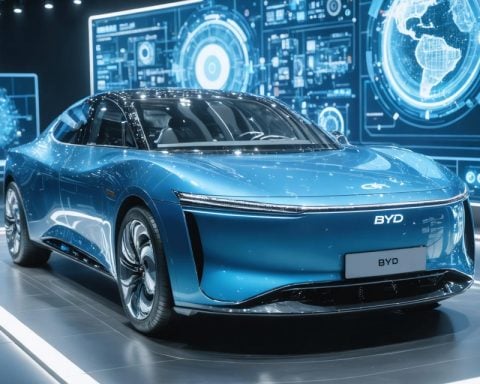In today’s rapidly changing urban landscapes, eco-friendly and adaptable modes of transportation have become crucial. Electric bikes, also known as ebikes, have seen a surge in popularity as cities continue to grow and evolve. Among the many options available, the DYU D3F and the Bodywel T16 stand out for their innovative designs, style, and usability. Let’s explore how these two ebikes cater to the diverse needs and lifestyles of urban dwellers.
When it comes to style and handling, the DYU D3F and the Bodywel T16 take different approaches to battery integration. The DYU D3F proudly displays its battery as a prominent design element, while the Bodywel T16 seamlessly conceals its battery within the frame. While some may appreciate the DYU D3F’s bold demonstration of its electric power, others may prefer the sleek and integrated appearance of the Bodywel T16. With such a wide range of design options available in the electric bicycle industry, users can choose a bike that suits their individual preferences and tastes.
Comfort and ergonomics play a vital role in enhancing the riding experience. The Bodywel T16 prioritizes adjustability and shock absorption, catering to riders of different heights. Its three levels of shock absorption, including front fork suspension, seat suspension, and mid-frame suspension, ensure a smooth and comfortable ride. On the other hand, the DYU D3F offers a cushioned seat but lacks additional shock-absorbing measures. While the DYU D3F may be suitable for short commutes, riders may experience discomfort on longer rides.
Both the DYU D3F and the Bodywel T16 are designed for urban performance. With their agile maneuverability and short turning radius, they excel in navigating congested city streets. The DYU D3F boasts the DTST+ Attitude Sensing algorithms for greater power, while the Bodywel T16 offers a powerful electric motor and an impressive battery range of up to 70 km. While both bikes have similar battery specifications, the Bodywel T16 provides a slightly greater range, making it an ideal choice for longer trips.
In terms of ease of use, the Bodywel T16 offers additional features such as smartphone control technology and a large LED screen for convenient monitoring. With the ability to modify bike settings and track journeys, riders can enjoy added control and convenience. Unfortunately, the DYU D3F lacks app integration and a smartphone control feature.
As the demand for electric bikes continues to grow, manufacturers are constantly innovating to meet the needs of urban dwellers. Whether you prefer a bike that showcases its electric power or one that seamlessly integrates technology, there’s an electric bike out there for everyone. The DYU D3F and the Bodywel T16 are just two examples of the diverse range of options available. So, jump on an electric bike and join the revolution in urban transportation.
The electric bicycle industry is experiencing significant growth as cities around the world prioritize sustainable and eco-friendly transportation options. According to market forecasts, the global electric bicycle market is expected to reach a value of $35.2 billion by 2025, with a compound annual growth rate of 6.1%. This growth is attributed to factors such as increasing urbanization, rising fuel prices, and government initiatives promoting electric mobility.
One of the key issues related to the electric bicycle industry is the need for infrastructure development to support its growth. Cities are investing in creating dedicated bike lanes, charging stations, and storage facilities to accommodate the increasing number of electric bicycles on the roads. This infrastructure development is crucial to ensure the safety and convenience of electric bike riders.
Another issue is the need for strict regulations and standards to ensure the quality and safety of electric bicycles. Different regions have different regulations regarding the speed, power, and classification of electric bikes. For example, in some countries, electric bikes are classified as bicycles and can be used on bike paths, while in others, they are classified as mopeds or motorcycles and require license plates and insurance. Standardization of regulations can help create a more uniform and accessible market for electric bicycles.
To stay updated on the latest industry news and trends, you can visit popular electric bicycle websites such as Bike-EU and Electric Bike. These websites provide information on industry events, product launches, market forecasts, and interviews with industry experts.
Overall, the electric bicycle industry is witnessing tremendous growth and innovation. With continuous advancements in design, technology, and infrastructure, electric bikes are becoming increasingly popular among urban dwellers as a sustainable and efficient mode of transportation.







